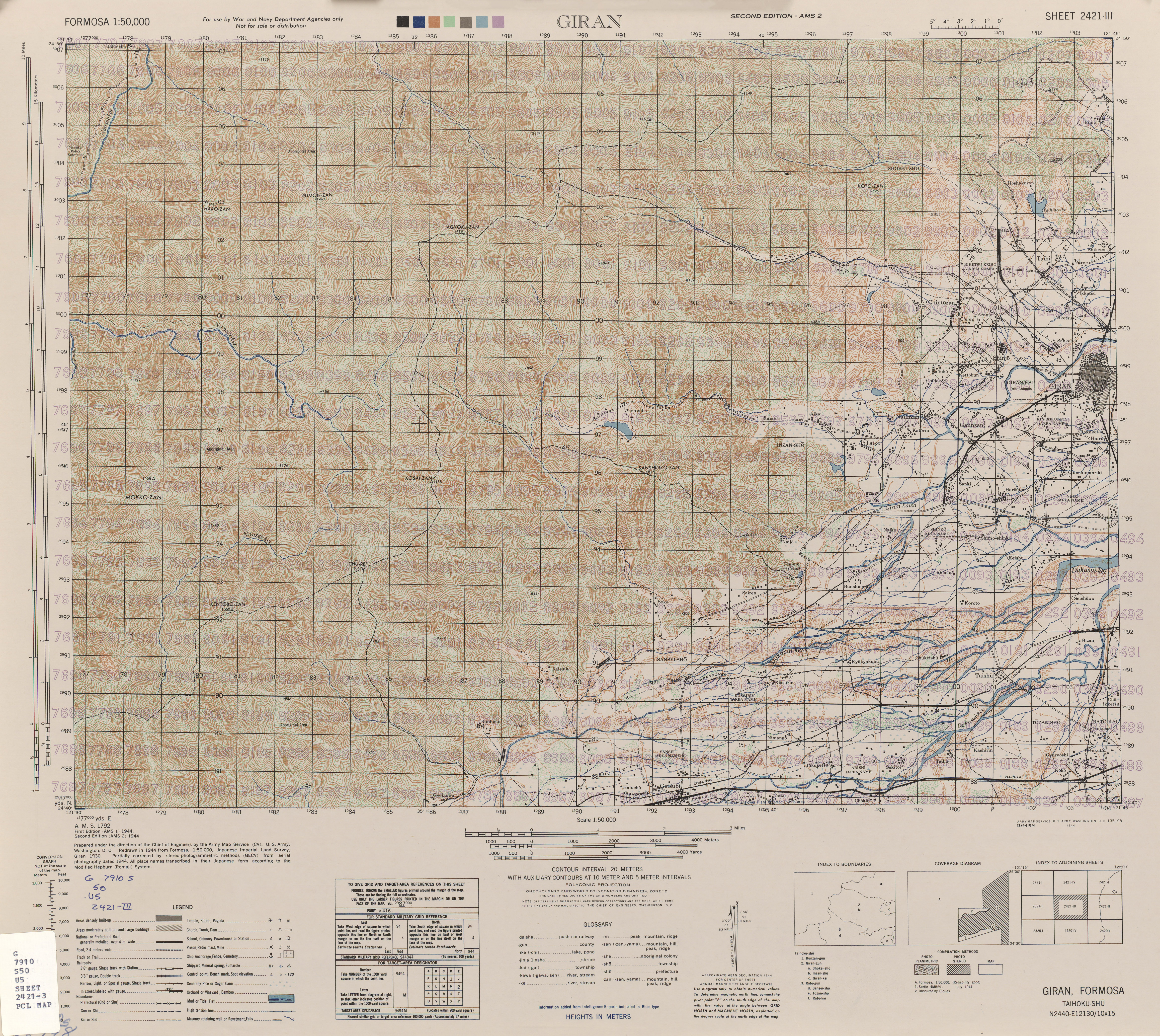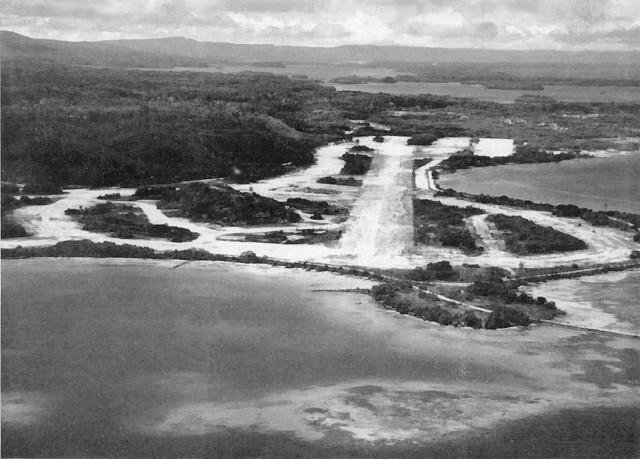|
11th Hikō Sentai
The 11th Air Squadron (第十一飛行戦隊 - 11th Hiko Sentai) was flying unit of the Imperial Japanese Army Air Service. The unit was established on 31 August 1938 at Harbin, Manchuria. The unit saw service in Manchuria during the Manchuria Incident, China during the Second Sino-Japanese War and Burma, Netherlands East Indies, Indochina, Rabaul, Solomon Islands, New Guinea, Philippines, Formosa and Japan during World War II. The unit was disbanded at Takahagi, Japan in late 1945. Aircraft * Type 91 (December 1937 - June 1942) *Type 92 (December 1937 - June 1942) * Ki-27 (December 1937 - June 1942) * Ki-43 I (August 1942 - June 1943) *Ki-43 II (July 1943 - February 1944) * Ki-84 (March 1944 - August 1945) Bases *Harbin Manchuria Jun 1932 Jun 1939 *Saienjo Nomonhan May 1939 Sep 1939 *Harbin Sep 1939 Oct 1939 *Wuchang China Oct 1939 Dec 1940 *Harbin Dec 1940 Nov 1941 *Kukan Phu Quoc Indo China Dec 1941 *Singora Thailand Dec 1941 Jan 1942 *Kuantan Malaya Jan 1942 Feb 1942 *Tand ... [...More Info...] [...Related Items...] OR: [Wikipedia] [Google] [Baidu] |
Imperial Japanese Army Air Service
The Imperial Japanese Army Air Service (IJAAS) or Imperial Japanese Army Air Force (IJAAF; ja, 大日本帝國陸軍航空部隊, Dainippon Teikoku Rikugun Kōkūbutai, lit=Greater Japan Empire Army Air Corps) was the aviation force of the Imperial Japanese Army (IJA). Just as the IJA in general was modeled mainly on the German Army, the IJAAS initially developed along similar lines to the Imperial German Army Aviation; its primary mission was to provide tactical close air support for ground forces, as well as a limited air interdiction capability. The IJAAS also provided aerial reconnaissance to other branches of the IJA. While the IJAAS engaged in strategic bombing of cities such as Shanghai, Nanking, Canton, Chongqing, Rangoon, and Mandalay, this was not the primary mission of the IJAAS, and it lacked a heavy bomber force. It did not usually control artillery spotter/observer aircraft; artillery battalions controlled the light aircraft and balloons that operated in the ... [...More Info...] [...Related Items...] OR: [Wikipedia] [Google] [Baidu] |
Akeno Air Field
Akeno Air Field is a military aerodrome of the Japan Ground Self-Defense Force. It is located northwest of Ise in the Mie Prefecture, Japan Japan ( ja, 日本, or , and formally , ''Nihonkoku'') is an island country in East Asia. It is situated in the northwest Pacific Ocean, and is bordered on the west by the Sea of Japan, while extending from the Sea of Okhotsk in the north .... JGSDF helicopter types based at Akeno include Bell AH-1S Cobra, Bell UH-1J Iroquois, Kawasaki OH-1, Kawasaki OH-6D, Kawasaki CH-47J/JA Chinook, Mitsubishi UH-60J and Emstron TH-480. References Airports in Japan Transport in Mie Prefecture Japan Ground Self-Defense Force bases Buildings and structures in Mie Prefecture {{Mie-geo-stub ... [...More Info...] [...Related Items...] OR: [Wikipedia] [Google] [Baidu] |
Units And Formations Of The Imperial Japanese Army Air Service
Unit may refer to: Arts and entertainment * UNIT, a fictional military organization in the science fiction television series ''Doctor Who'' * Unit of action, a discrete piece of action (or beat) in a theatrical presentation Music * ''Unit'' (album), 1997 album by the Australian band Regurgitator * The Units, a synthpunk band Television * ''The Unit'', an American television series * '' The Unit: Idol Rebooting Project'', South Korean reality TV survival show Business * Stock keeping unit, a discrete inventory management construct * Strategic business unit, a profit center which focuses on product offering and market segment * Unit of account, a monetary unit of measurement * Unit coin, a small coin or medallion (usually military), bearing an organization's insignia or emblem * Work unit, the name given to a place of employment in the People's Republic of China Science and technology Science and medicine * Unit, a vessel or section of a chemical plant * Blood unit, a measurement ... [...More Info...] [...Related Items...] OR: [Wikipedia] [Google] [Baidu] |
Yilan City
Yilan City (Mandarin pinyin: ''Yílán Shì''; Hokkien POJ: ''Gî-lân-chhī'') is a county-administered city and the county seat of Yilan County, Taiwan Province, Republic of China. The city lies on the north side of the Lanyang River. History The Yilan Plain in which the city is located has historically been referred to as Kapalan (), Kapsulan (; also 甲子蘭), Komalan (), etc. These names, as well as that of Yilan itself, were given to the sites by the Kavalan tribe of Taiwanese aborigines. Later arrivals included Han Chinese settlers during the Qing Dynasty in China (1802) and settlers from Okinawa during Taiwan's Japanese era (1895-1945). Qing Dynasty In 1810 under Qing dynasty rule, a formal administration office was established at Wuwei (五圍) and "Komalan Subprefecture" () was at the present day location of Yilan City. Construction of the city wall was completed a year later. After a few years once the basic infrastructure was ready, the city assumed the politic ... [...More Info...] [...Related Items...] OR: [Wikipedia] [Google] [Baidu] |
Madang Airport
Madang Airport , is an airport located in Madang, Papua New Guinea. Airlines and destinations History World War II During World War II, occupied by the Imperial Japanese Army in January 1943, as a forward operating airfield for aircraft based at Wewak. Later expanded to a 3250' x 240' runway with a single taxiway with 31 revetment areas. Bombed by the allies during late 1943 and early 1944 the airfield became unserviceable. Imperial Japanese Army Air Force Units at Madang Imperial Japanese Army Air Force *59th Sentai (Nakajima Ki-43 Oscar) *68th Sentai (Kawasaki Ki-61 Tony) *248th Sentai (Nakajima Ki-43-III Oscar) Allied Liberation Liberated by Australian Army forces on 24 April 1944. A large amount of high octane fuel was captured and used by the Australians for use in the Royal Australian Navy motor launch boats. The airfield was repaired and used by the Royal Australian Air Force until the end of the war. Post WW2 in 1947, the Department of Civil Aviation sent an airport ... [...More Info...] [...Related Items...] OR: [Wikipedia] [Google] [Baidu] |
Wewak Airfield
Wewak Airfield is a former World War II airfield near Wewak, Papua New Guinea. History Wewak Airfield was built by the Territory of New Guinea The Territory of New Guinea was an Australian-administered United Nations trust territory on the island of New Guinea from 1914 until 1975. In 1949, the Territory and the Territory of Papua were established in an administrative union by the nam ... administration and the Catholic mission in 1937. The airfield consisted of a single runway, running parallel to Wirui Beach. The Imperial Japanese Army occupied the airfield on 18 December 1942 and began to redevelop the airfield. The airfield was abandoned after the war, with the runway now serving as part of a road. References * Transport in Papua New Guinea Airports in Papua New Guinea East Sepik Province {{PapuaNewGuinea-struct-stub ... [...More Info...] [...Related Items...] OR: [Wikipedia] [Google] [Baidu] |
Munda Airport
Munda Airport is an international airport adjacent to the town of Munda, Western Province in Solomon Islands. Originally built by Japanese forces during World War II and further developed by the U. S. Naval Construction Battalions 24 and 73 following its capture. After the war, the airfield became a commercial airport for regional flights. In 2015, a New Zealand government aid and development project significantly upgraded the field to an international airporThe upgrade included the removal of a large amount of unexploded ordnance left behind by vacating Japanese and US forces. Although there were no international flights scheduled by 2019, the main economic purpose of the upgrade is to serve as an alternate field for international flights to Honiara International Airport, significantly reducing the fuel load and improving the economics of the flight. For example, prior to the Munda upgrade, a flight from Brisbane to Honiara had to carry sufficient fuel to return to Brisbane ... [...More Info...] [...Related Items...] OR: [Wikipedia] [Google] [Baidu] |
Buka Airport
Buka Airport is an airport serving Buka Island in the Autonomous Region of Bougainville in Papua New Guinea. It is located at the southern end of the island, near Buka Passage behind the town of Buka, and pre-war Chinatown. The airport terminal is about 1.5 kilometres from the Buka Township. In 2004, the airport experienced some closures due to land disputes. Residents of Ieta prevented service at the airport, demanding the government pay land fees. There used to one navigational aid, the Buka NDB/DME situated on nearby Sohano Island. However this has been removed since Dec 2019. History World War II The origins of the airfield begin in 1941 when Australian troops built gun pits around a primitive airstrip in December 1941. On 2 January 1942 with the Japanese approaching, they prepared the airfield for demolition, blowing holes in the runway, and logs and pipes to prevent aircraft from landing. The following day, orders came to repair the field for aircraft evacuating f ... [...More Info...] [...Related Items...] OR: [Wikipedia] [Google] [Baidu] |
Lae Airport (Papua New Guinea)
Lae Airfield is a former World War II airfield and later, civilian airport located at Lae, Morobe Province, Papua New Guinea. The airport was closed in the 1980s, in favour of Lae Nadzab Airport, which was able to accommodate larger jet aircraft. The airport was also known as Lae Drome or Lae Aerodrome. History The airport was built in 1927 and was an operating airport until 1977. The airport construction resulted in Lae becoming a major city in Papua New Guinea. Post World War I In 1921 when the military administration ended after World War I, a gold prospector named Cecil John Levien was appointed District Officer of Morobe. On 1 January 1923 Levien acquired a mining right for the area and shortly after formed a syndicate called ''Guinea Gold (No Liability)''. In November 1927 the Guinea Gold syndicate became Guinea Airways Limited and Levien arranged for the construction of the airstrip to assist the gold mine productions around Wau, Papua New Guinea, Wau. World War II ... [...More Info...] [...Related Items...] OR: [Wikipedia] [Google] [Baidu] |


